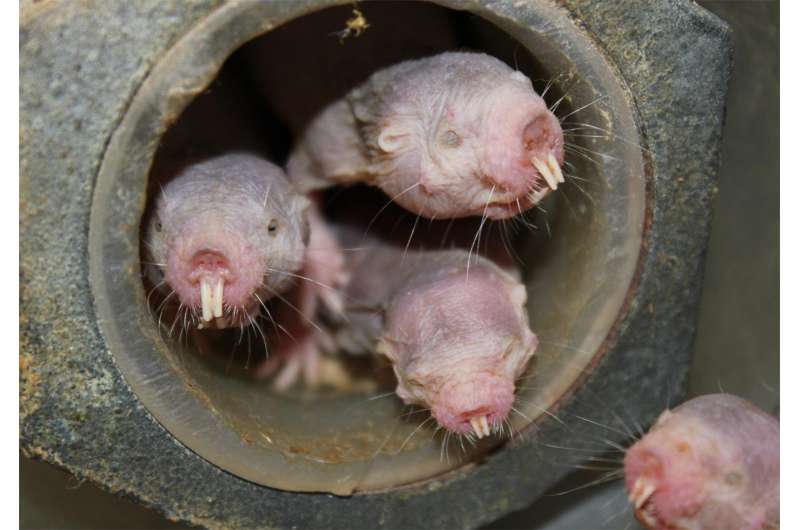Naked mole-rats turn into plants when oxygen is low

Deprived of oxygen, naked mole-rats can survive by metabolizing fructose just as plants do, researchers report this week in the journal Science.
Understanding how the animals do this could lead to treatments for patients suffering crises of oxygen deprivation, as in heart attacks and strokes.
"This is just the latest remarkable discovery about the naked mole-rat—a cold-blooded mammal that lives decades longer than other rodents, rarely gets cancer, and doesn't feel many types of pain," says Thomas Park, professor of biological sciences at the University of Illinois at Chicago, who led an international team of researchers from UIC, the Max Delbrück Institute in Berlin and the University of Pretoria in South Africa on the study.
In humans, laboratory mice, and all other known mammals, when brain cells are starved of oxygen they run out of energy and begin to die.
But naked mole-rats have a backup: their brain cells start burning fructose, which produces energy anaerobically through a metabolic pathway that is only used by plants - or so scientists thought.
In the new study, the researchers exposed naked mole-rats to low oxygen conditions in the laboratory and found that they released large amounts of fructose into the bloodstream. The fructose, the scientists found, was transported into brain cells by molecular fructose pumps that in all other mammals are found only on cells of the intestine.
"The naked mole-rat has simply rearranged some basic building-blocks of metabolism to make it super-tolerant to low oxygen conditions," said Park, who has studied the strange species for 18 years.
At oxygen levels low enough to kill a human within minutes, naked mole-rats can survive for at least five hours, Park said. They go into a state of suspended animation, reducing their movement and dramatically slowing their pulse and breathing rate to conserve energy. And they begin using fructose until oxygen is available again.
The naked mole-rat is the only known mammal to use suspended animation to survive oxygen deprivation.
The scientists also showed that naked mole-rats are protected from another deadly aspect of low oxygen - a buildup of fluid in the lungs called pulmonary edema that afflicts mountain climbers at high altitude.
The scientists think that the naked mole-rats' unusual metabolism is an adaptation for living in their oxygen-poor burrows. Unlike other subterranean mammals, naked mole-rats live in hyper-crowded conditions, packed in with hundreds of colony mates. With so many animals living together in unventilated tunnels, oxygen supplies are quickly depleted.
More information: "Fructose-driven glycolysis supports anoxia resistance in the naked mole-rat," Science (2017). science.sciencemag.org/cgi/doi … 1126/science.aab3896
Journal information: Science
Provided by University of Illinois at Chicago


















